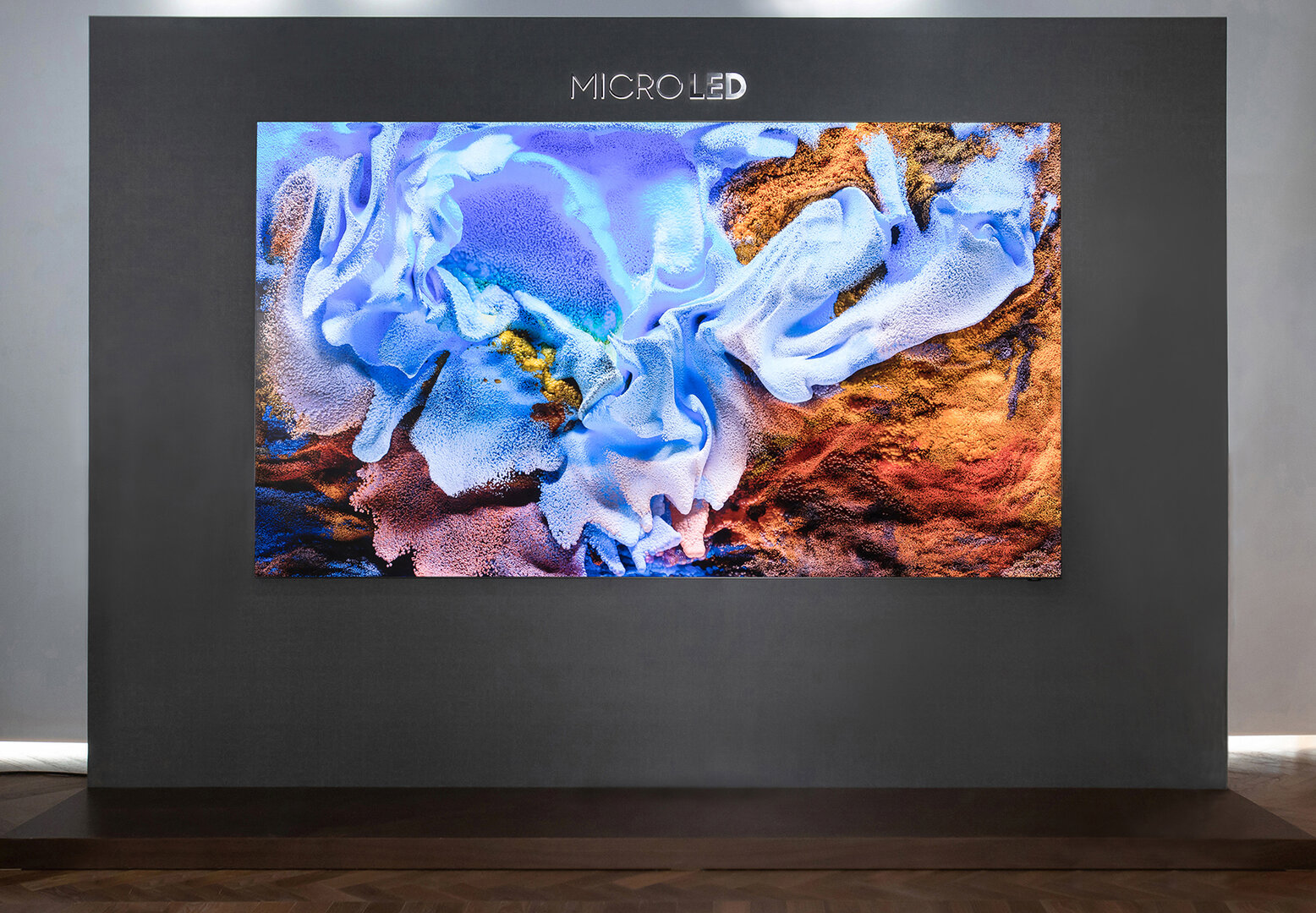At the beginning of April this year, the first micro-LED televisions from Samsung should actually come onto the market in Germany. Three months later, however, these are still not available. In the home country South Korea, however, the 110-inch model should sell well, but there is no trace of the smaller 99-inch model there either.
A look back at the micro-LED announcements
At the CES in January 2019, Samsung made the first official announcement that, after the pure B2B product “The Wall”, it would also offer micro-LED televisions for consumers in the coming years. A first 75-inch pre-series device was demonstrated at the Las Vegas trade fair, while in the background the gigantic “The Wall” with a screen diagonal of 5.56 m (219 inches) dominated the ballroom.
At the end of 2020, the corresponding announcement followed for the home market of South Korea that a first 110-inch micro LED television was planned for consumers for the equivalent of 129,000 euros. The global debut of the televisions was stated to be in the first quarter of 2021.
In Germany from 129,999 euros
In mid-March of this year it was time for Samsung Germany to announce that it would be bringing the first two micro-LED televisions onto the market in Germany from the beginning of April. Two versions were planned: one with 110 inches (279.4 cm), as it was initially also offered in South Korea, for 149,999 euros and a model with 99 inches (251.5 cm) for 129,999 euros.
-
 Samsung Micro LED (Image: Samsung)
Samsung Micro LED (Image: Samsung)
Image 1 of 3
 Samsung Micro LED
Samsung Micro LED 
 Samsung Micro LED
Samsung Micro LED From the start of April became nothing
Since that announcement, however, it has stayed exactly that way. In retail there is no trace of the devices when, for example, well-known price comparisons or large providers such as Media Markt and Saturn are searched directly. “Unfortunately for your search we found & quot; Samsung Micro LED & quot; no matching match found, ”says the red electronics chain. There is also a yawning emptiness on Samsung's website itself. Although micro-LED technology and its advantages are presented there, the televisions cannot be bought. If you leave your first and last name, telephone number and email address as well as the date of birth, you can register for a telephone consultation and receive further information. A sales contract can potentially also be concluded in this way, but in March it was explicitly stated that the micro-LED televisions will be available in stores at the beginning of April.
400 to 500 micro-LED devices a year
The industry magazine The Elec from South Korea today provides an interesting insight into the sale of micro-LED televisions in their home country. The 110-inch model is said to be selling well there, although in absolute terms it is a product in the niche of the niche. The total global micro-LED sales in the B2B and B2C sectors currently make up 400 to 500 units per year at Samsung, according to the report. This corresponds to a share of just 0.001 percent of Samsung's total annual TV sales, which scratches the 50 million mark.
 Samsung Micro LED (Image: Samsung)
Samsung Micro LED (Image: Samsung) The production remains extremely complex
While the micro-LED televisions are still only being teased in this country, in South Korea there is at least a real product page for the 110-inch “MNA110MS1ACXKR”. The announced 99-inch model cannot be found there either. Samsung itself justifies this with the high demand for the 110-inch version, but according to The Elec, insiders assume a price problem and hurdles in production. At 99 inches, the television has to be offered cheaper because the screen size continues to be seen as the benchmark for price. With micro-LED technology, however, the production of a 4K model in 99 inches is more complex than in 110 inches, because the tiny LED chips have to move closer together, which increases the likelihood of defects in production. Samsung has to transfer more than 8 million LED chips to the PCB for the television and with only 1 percent defective pixels, more than 80,000 LEDs have to be replaced.
New processes are being developed
Samsung is therefore developing next-generation manufacturing processes that are supposed to combine several subpixels on one chip. Instead of executing R (red), G (green) and B (blue) individually, RGB would then be transferred onto a chip on the PCB, which reduces this process to a third. Samsung also wants to develop RGBRGB micro-LED chips for series production, which would reduce the number of modules by half and make production less complicated.
The editorial team is on Samsung Germany asked what caused the delays and when the availability of micro-LED televisions in this country can be expected.